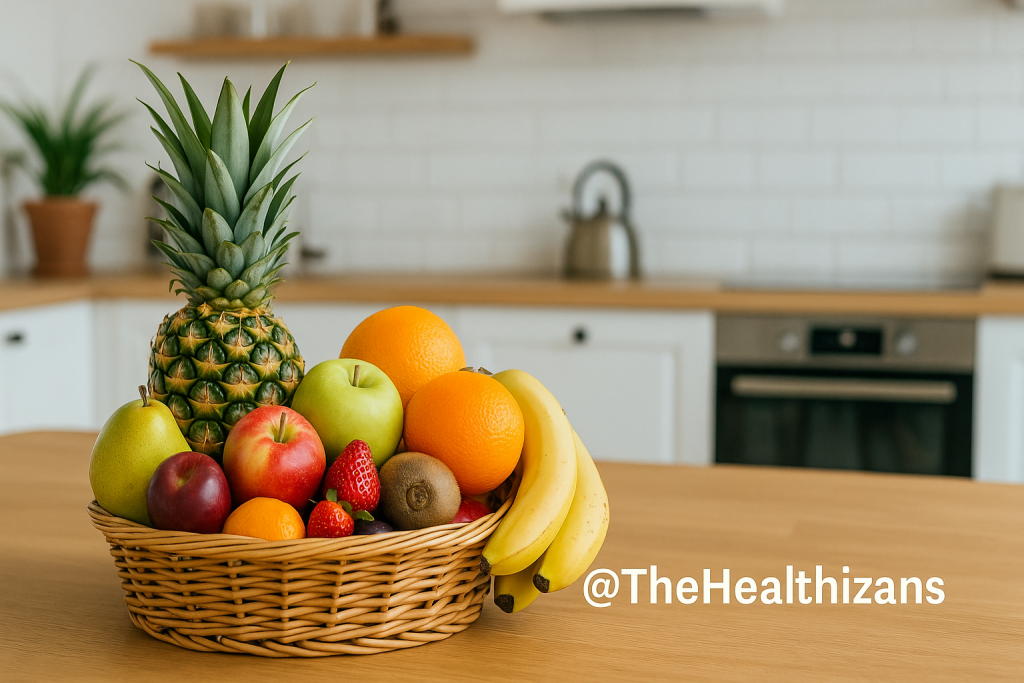
🍽️ Let’s Eat Our Way to Better Blood Pressure
When it comes to managing blood pressure, your plate matters just as much as your prescription. Across the globe — from bustling cities to rural villages — dietary habits are shifting, and not always for the better. Diets high in salt, sugar, and ultra-processed foods are fuelling a global rise in hypertension. But here’s the good news: small food swaps can make a big difference.
🌿 Best Foods for Lowering Blood Pressure
Here are evidence-backed foods that support heart and vessel health:
🥬 1. Leafy Greens
Spinach, kale, amaranth leaves, collard greens, and local varieties like ugu (fluted pumpkin leaves in Nigeria) are packed with potassium and magnesium. These minerals help your body eliminate excess sodium and relax the walls of your blood vessels, leading to lower blood pressure.
Try them steamed, blended into smoothies, or sautéed with garlic and a drizzle of olive oil.
🍓 2. Berries
Blueberries, strawberries, blackberries, and raspberries are loaded with anthocyanins, powerful antioxidants that support artery flexibility and reduce stiffness.
In many parts of Asia and Africa, locally grown berries like mulberries or indigenous fruits with high antioxidant content can also be beneficial.
🍠 3. Beets
Beetroot (and beet juice) is high in nitrates, which the body converts into nitric oxide — a molecule that dilates blood vessels and improves circulation.
Research shows drinking beetroot juice can significantly reduce systolic blood pressure within hours.
🥣 4. Oats
Oats contain beta-glucan, a soluble fibre that can lower both blood pressure and LDL cholesterol when consumed regularly.
A bowl of unsweetened oatmeal with berries and nuts makes a great heart-healthy breakfast.
🐟 5. Fatty Fish
Salmon, mackerel, sardines, and even locally available oily fish like tilapia or catfish (prepared healthily) provide omega-3 fatty acids that reduce inflammation and support vascular health.
Aim for two servings a week, grilled or steamed, not fried.
🍌 6. Bananas
A potassium superstar! Just one medium banana contains around 400 mg of potassium, helping to balance sodium levels in the body and ease tension in blood vessel walls.
Other potassium-rich options: plantains, avocados, sweet potatoes, and beans.
🧄 7. Garlic
More than just a flavour booster, garlic contains allicin, which has vasodilatory effects — meaning it helps blood vessels widen, reducing pressure.
Raw or lightly cooked garlic offers the best benefit.
🥛 8. Natural Yogurt
Low-fat or fat-free dairy products — particularly plain yogurt without added sugars — can supply calcium, potassium, and probiotics that support healthy blood pressure regulation.
Try with fresh fruit or herbs like mint for flavour.
🚫 Foods to Avoid or Limit
Let’s be honest — some foods are working against your heart health.
🧂 1. Salt-Heavy Processed Foods
Ready meals, canned soups, crisps, instant noodles, and processed meats like bacon or corned beef are often sodium bombs.
WHO recommends less than 5g of salt per day — about a teaspoon. In many countries, people consume more than double this.
🧃 2. Sugary Drinks
Sodas, sweetened teas, and energy drinks cause blood sugar spikes, weight gain, and metabolic stress, all of which raise blood pressure over time.
🥓 3. Red and Processed Meats
Regular consumption of sausages, deli meats, hot dogs, and cured meats is linked to higher hypertension and heart disease risk due to their high sodium and saturated fat content.
🥫 4. Packaged Sauces & Instant Flavours
Soy sauce, ketchup, seasoning cubes, and ready-made spice mixes can contain surprisingly high salt levels. Always check the label and use sparingly.
🍷 5. Alcohol (in excess)
While moderate drinking (1 unit/day for women, 2 for men) may be okay, exceeding this contributes to high blood pressure and interferes with medication.
🌍 The Global Plate
Worldwide, certain dietary patterns consistently outperform others in controlling blood pressure:
- DASH Diet (Dietary Approaches to Stop Hypertension) – Emphasises fruits, vegetables, whole grains, low-fat dairy, and lean protein while minimising salt and processed foods. Widely recommended by the American Heart Association.
- Mediterranean Diet – Popular across Southern Europe and North Africa, it incorporates olive oil, legumes, fish, nuts, herbs, and red wine (in moderation).
- Traditional Plant-Based Diets – In parts of West Africa and Asia, meals based on grains, legumes, yams, fermented foods, and minimal processing have historically promoted heart health.
These patterns all share one thing: less salt, fewer additives, more plants, and healthy fats.
💡 Final Thoughts
Your daily diet isn’t just fuelling your body — it’s shaping your blood pressure, your heart health, and your risk of chronic disease. You don’t need to overhaul everything overnight. Just start with:
- One new vegetable this week
- Swapping out a sugary drink for water
- Reducing salt in your cooking
Over time, those small actions build lifelong protection.
Stay informed. Live well. Together.
📚 References:
- World Health Organization. (2023). Healthy Diet Factsheet
- American Heart Association. (2023). Dietary Recommendations to Manage Hypertension
- NHS UK. (2022). Salt and Your Diet
- Harvard School of Public Health. (2023). DASH and Mediterranean Eating Patterns
- Nigerian Journal of Nutritional Sciences. (2022). Local Foods and Hypertension Prevention



